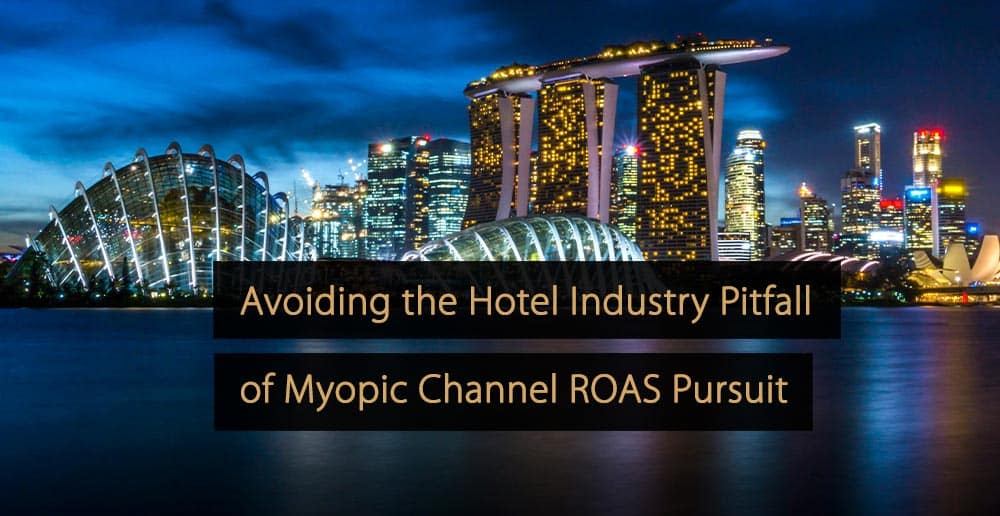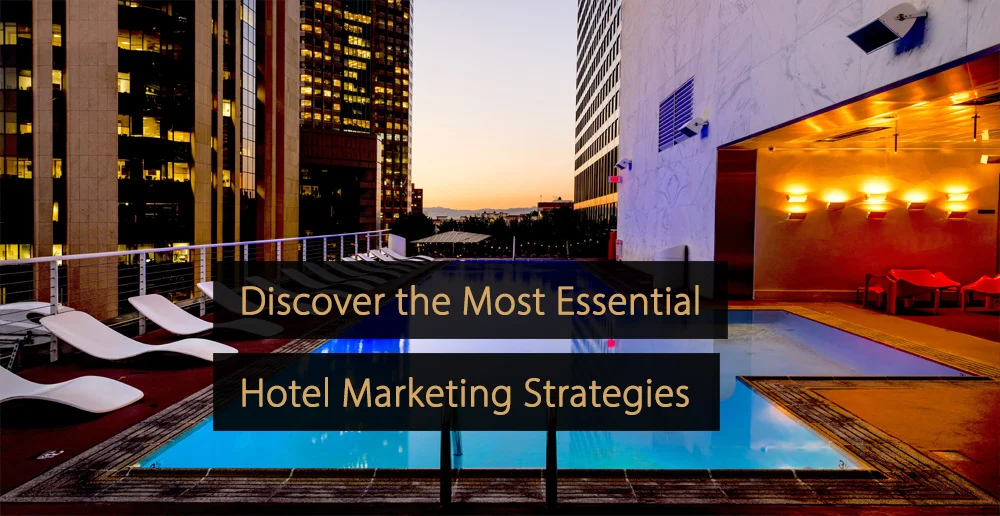In the ever-evolving landscape of digital marketing, the hotel industry finds itself at a crossroads. While embracing the digital revolution, many hoteliers have fallen into a trap that threatens to undermine their marketing efforts; an obsessive focus on individual channel return on ad spend (ROAS).
This fixation, while seemingly logical, is creating a significant disconnect in the industry’s approach to customer acquisition and retention, ultimately hampering growth and missing opportunities for deeper customer engagement.
The Allure of Channel-Specific ROAS
The allure of channel-specific ROAS is understandable. It provides a clear, quantifiable metric that appears to justify marketing spend. Marketers can point to a specific number and say, “Look, for every dollar we spend on this channel, we get X dollars back.” It’s neat, it’s tidy, but it can be misleading.
Consider a typical scenario: A hotel invests heavily in Google Ads, seeing a ROAS of 5:1. On the surface, this appears to be a resounding success. The marketing team celebrates, the CFO approves more budget, and the strategy seems set. But this simplistic view obscures a more complex reality.
The Multi-Touch Reality
The reality of modern consumer behavior is far more complex than this single-channel view suggests. Today’s travelers don’t confine their research and booking process to a single platform. They might first encounter a hotel on Instagram, research it further on TripAdvisor, check prices on an OTA, and finally book directly through the hotel’s website. In this scenario, which channel should get credit for the conversion?
Let’s break down a typical customer journey:
- Awareness: The traveler sees a stunning image of the hotel on Instagram.
- Interest: They search for the hotel on Google and click on an organic listing to visit the hotel’s website.
- Consideration: They read reviews on TripAdvisor and compare prices on Booking.com.
- Intent: They return to Google, click on a paid ad, and revisit the hotel’s website.
- Decision: They book directly through the hotel’s website.
In the current ROAS-centric model, the Google Ads campaign would likely receive full credit for this booking. But is that an accurate representation of the customer’s journey? Clearly not.
This multi-touch journey is the norm, not the exception. Yet, by fixating on individual channel ROAS, hotel teams are essentially wearing blinders, seeing only a fraction of the customer’s path to purchase. This myopic view leads to multiple destabilizing issues.
The Pitfalls of Channel-Centric ROAS
- Undervaluation of top-of-funnel activities: Channels that introduce travelers to the hotel but don’t directly lead to bookings may be underappreciated or even cut, despite their crucial role in the customer journey. In our example, the initial Instagram post played a vital role in sparking interest, yet it would receive no credit in a last-click attribution model.
- Overemphasis on last-click attribution: The channel that gets the final click before booking often receives all the credit, ignoring the contributions of other touchpoints. This can lead to an over-investment in bottom-of-funnel activities at the expense of brand-building and awareness campaigns.
- Siloed marketing efforts: When each channel is evaluated in isolation, it becomes challenging to create cohesive, cross-channel campaigns that reflect the actual customer journey. This can result in disjointed messaging and a fragmented customer experience.
- Misallocation of funds: Over-reliance on channel-specific ROAS can lead to suboptimal budget allocation, potentially starving effective but less directly attributable channels of necessary resources. For instance, a hotel might cut its social media budget despite its role in initiating many customer journeys.
- Neglect of the overall customer experience: By focusing on channel performance rather than the holistic customer journey, hotels risk creating disjointed and frustrating experiences for potential guests. This shortsightedness can harm brand perception and customer loyalty in the long run.
- Ignoring the long-term value of customers: ROAS typically focuses on immediate conversions, overlooking the potential lifetime value of a customer. A guest acquired through a high-ROAS channel might never return, while one from a seemingly less efficient channel could become a loyal, repeat customer.
- Vulnerability to market changes: Over-reliance on a single high-performing channel can leave hotels vulnerable to sudden changes in that channel’s effectiveness. Algorithm updates, rising competition, or shifts in consumer behavior can quickly erode the performance of a previously successful channel.
–
–
The Path Forward: A Holistic Approach
The solution to this dilemma lies not in abandoning ROAS altogether but in evolving our understanding and application of it. Hotels need to shift towards a more holistic, multi-touch attribution model that acknowledges the interconnected nature of modern marketing channels.
This new approach should prioritize the overall customer journey, recognizing that each touchpoint plays a role in the final conversion. It requires investment in advanced analytics capabilities that can track cross-channel interactions and attribute value appropriately. More importantly, it demands a cultural shift within marketing teams, moving away from channel-specific silos towards integrated, customer-centric strategies.
Here are some key steps hotels can take:
- Implement multi-touch attribution models: Utilize more sophisticated attribution models that distribute credit across multiple touchpoints in the customer journey. This could include linear, time-decay, or data-driven attribution models.
- Focus on customer lifetime value (CLV): Shift the emphasis from immediate ROAS to long-term customer value. This involves tracking repeat bookings, referrals, and overall customer satisfaction.
- Invest in cross-channel data integration: Implement systems that can track and analyze customer interactions across all channels, both online and offline, to get a complete picture of the customer journey.
- Develop a unified customer view: Use customer data platforms (CDPs) to create a single, comprehensive view of each customer, including their preferences, behaviors, and interactions across all touchpoints.
- Emphasize brand metrics: Incorporate brand awareness, sentiment, and engagement metrics into marketing evaluations. These indicators, while less immediately tangible than ROAS, provide insight into long-term brand health and potential for future conversions.
- Encourage cross-department collaboration: Break down silos between marketing, sales, and customer service teams to ensure a consistent and cohesive customer experience across all touchpoints.
- Experiment with incrementality testing: Use controlled experiments to measure the true incremental impact of marketing activities, going beyond simple correlation-based metrics.
Embracing Complexity for Greater Success
The path forward is clear, if challenging. Hotels must break free from the constraints of channel-centric thinking and embrace a more nuanced, interconnected view of their marketing ecosystem. This means accepting the complexity of the modern customer journey and developing strategies that reflect this reality.
By adopting a holistic approach, hotels can create marketing strategies that truly resonate with customers, drive sustainable growth, and build lasting brand value. This shift requires investment in new technologies, skills, and mindsets, but the rewards – increased customer loyalty, improved marketing efficiency, and sustainable competitive advantage – far outweigh the costs.
In the end, the goal isn’t just to drive bookings, but to create a lasting relationship with guests. That requires a vision that extends far beyond the limitations of individual channel ROAS. By embracing this broader perspective, hotels can not only navigate the complexities of the digital age but thrive in it, creating memorable experiences that keep guests checking in time and time again.
Free Hotel Case Study: How Marketing Personalization Motivates Travelers and Drives Bookings for Hotels
In this compact case study, you’ll find data showing the importance of marketing personalization to the average traveler. Download the case study to learn how any hotel with a digital footprint can use marketing personalization to increase conversions.
Click here to download the case study “How Marketing Personalization Motivates Travelers and Drives Bookings for Hotels”.
More Tips to Grow Your Business
Revfine.com is the leading knowledge platform for the hospitality and travel industry. Professionals use our insights, strategies, and actionable tips to get inspired, optimize revenue, innovate processes, and improve customer experience.Explore expert advice on management, marketing, revenue management, operations, software, and technology in our dedicated Hotel, Hospitality, and Travel & Tourism categories.









Leave A Comment